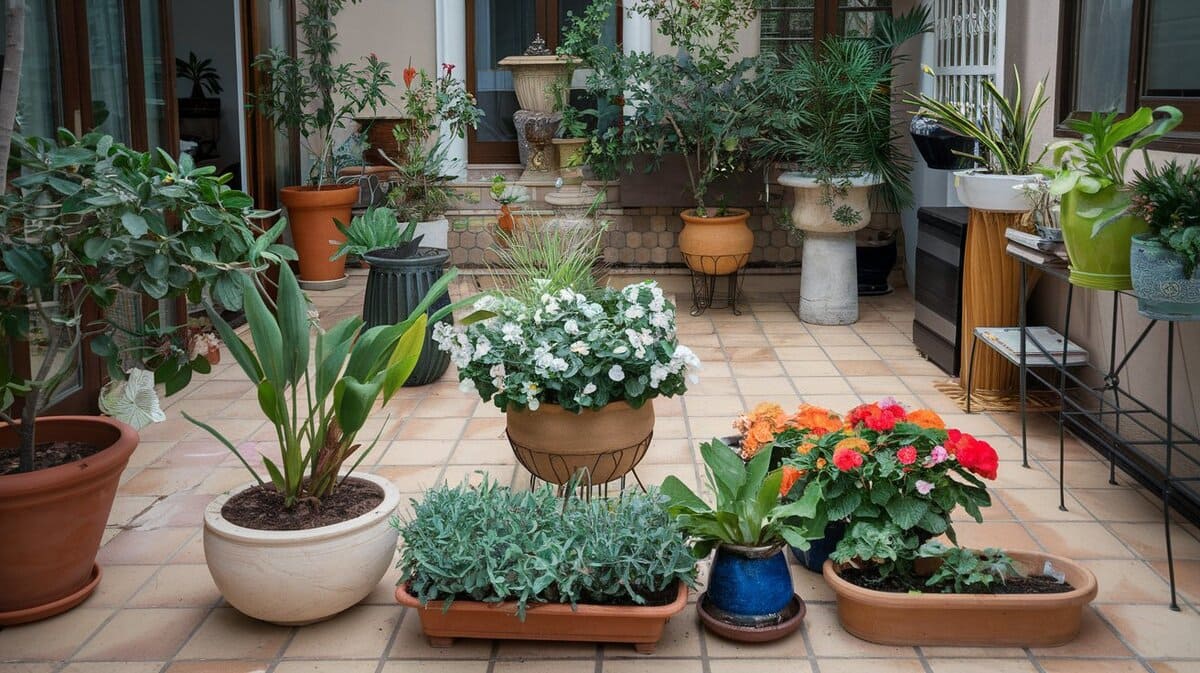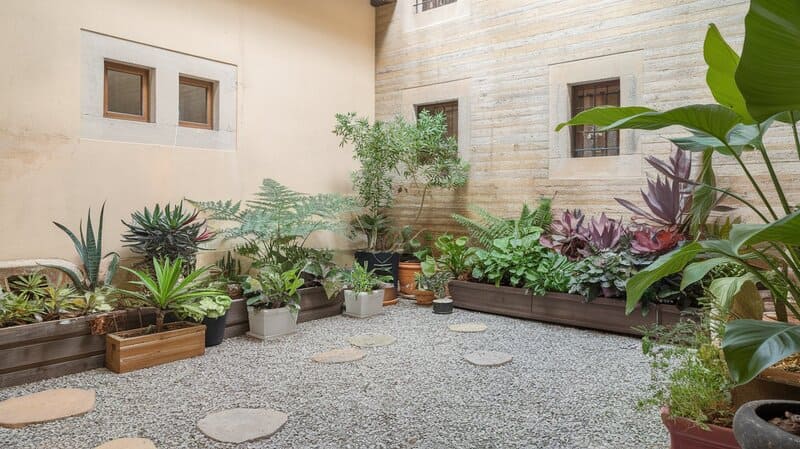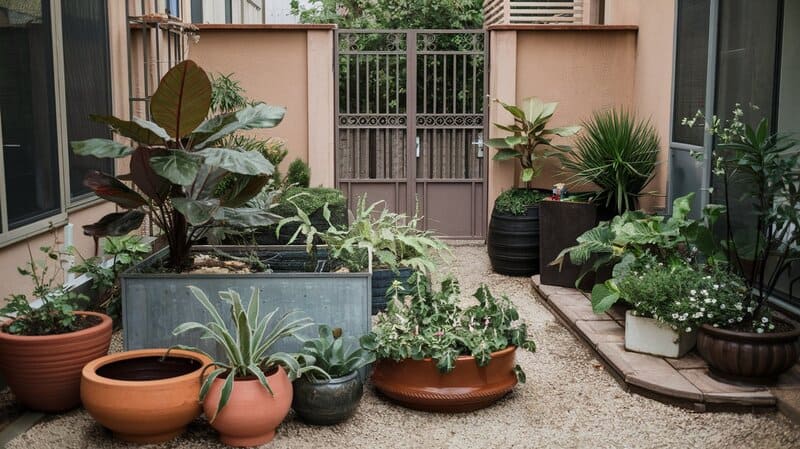
Essentially, the planters serve as a containers for cultivating and showcasing live plants. A planter is bigger and provides a more flexible area for placing more plants than a standard flower pot. Planters are available in a variety of sizes, forms, and materials, ranging from traditional terracotta to contemporary plastic composites, to meet both practical and aesthetic requirements. They make it possible for gardeners to introduce greenery into interior spaces, patios, and urban settings where traditional planting can be difficult.
Creating a healthy environment for plant development is one of a planter's most important functions. A successful planter must ensure that the plant has enough room for its roots to spread out, that drainage is adequate, and that the material used matches the demands of the plant. Planters allow for artistic gardening expressions as well as supporting the biological needs of plants and adding to the overall aesthetic appeal of the area they live in.
Why Planters Are Essential for Gardening
1. Health benefits
Air quality may also be enhanced by plants. Some plants have the ability to remove toxins and pollutants from the air, enhancing the aesthetics of your outdoor area while also improving the health of the area where you spend time. Including planters in your outside area guarantees a more hygienic and refreshing environment, which benefits your general health.
2. Increase your property's attractiveness.
One method to liven up your front garden is using colorful pots. Maybe you could fill them with summer bedding plants like begonias, zinnias, and petunias, and then switch them out for winter plants like bellis and pansies. As an alternative, for year-round appeal, consider using evergreen bushes. In bigger pots, you could also want to go for a combination of plants, including herbaceous perennials and bulbs.
3. Use planters to maximize your available space.
Look up if the amount of ground area in your outdoor area is restricted; if horizontal space is at a premium, make advantage of vertical space! A well-selected upright tree with a narrow trunk may give an abundance of foliage at eye level and beyond, even if a tree planter may occupy a comparatively small amount of area at ground level. An additional choice for your property's walls or the surrounding areas are climbers. You may try planting clematis, honeysuckle, or ivy inside a rectangle planter.
4. Increase your house's value.
Your home's worth will probably rise along with its appeal to potential purchasers if you maintain a lovely garden full of lovely plants. In cities where space is limited and the countryside is far away, a green area outside is likely to be highly valued. In the summer, it may almost seem like an extra room.
5. Establish privacy and boundaries.
The greenest approach to erecting a barrier in your garden or outdoor area is using plants. They are most likely the most visually pleasing as well. Bees, wasps, and butterflies all benefit from flowering plants, while birds and insects can find refuge in hedges. For the caterpillars of some of our favorite butterflies, even the leaves of some plants may provide an essential supply of food.

How to Choose the Right Planters for Your Space
Your plants' growth and overall health depend on the planter you choose for them. When choosing, consider the pot's size, the material it is made of, and its drainage capabilities.
Make sure you select plants appropriate for the particular container size, whether you go for giant indoor plant pots or little planters for cramped locations. You may build a flourishing indoor garden that adds beauty and peace to your living area by giving your plants the right container.
Size of plants
The size of the pot is one of the most crucial factors to consider when selecting a planter for your plants. Big plant pots provide roots plenty of space to grow, which is vital for strong, healthy plants. As a general guideline, choose a container 1-2 inches bigger in diameter than the root ball of the plant as it is now. This keeps the roots from being root-bound and permits them to expand freely.
Materials from Plants
There are several choices for indoor planters in terms of materials. Every material offers benefits and things to consider of its own. Here are some well-liked options:
Different Types of Planters for Every Garden
1. Ceramic or terracotta planters
Planters made of terracotta or ceramic are timeless choices with an earthy, rustic appearance. Because they are porous and promote adequate air and water flow, these pots are ideal for plants that love dampness.
2. Molded planters
Plastic planters come in a variety of styles and prices. They are a well-liked option for both indoor and outdoor gardening as they are available in an extensive variety of sizes, styles, and colors.
3. Wooden Planters
Wooden planters have a rustic, natural appearance. They do not seep dangerous chemicals into the soil, which makes them ideal for organic farming.
4. Metallized Planters
You may give your landscape an industrial or modern feel by using metal planters. They are resilient to inclement weather and long-lasting.

5. Fiberglass Planters
Larger plants may be planted in fiberglass planters since they are sturdy and lightweight. They provide a large selection of colors and finishes, which greatly expands the possibilities for design.
6. Concrete Planters
For bigger plants and trees, concrete planters provide a modern appearance. They are quite robust and offer excellent insulation.
7. Simple planters
Easyplant planters are a wonderful option for novice plant parents as well as indoor plant aficionados. The self-watering mechanism of these creative planters includes a water tank that only has to be replenished once a month. A wick is used to carry water to the soil, giving your plants a steady supply of the ideal moisture.
Drainage capabilities
Your indoor plants' health depends on proper drainage. Make sure the planter you choose includes bottom drainage holes. By letting extra water out via these pores, the roots are kept out of standing water, which can cause root rot. Use a plastic liner or add tiny rocks or stones to the bottom of the ornamental planter (if there aren't any drainage holes) to create a drainage layer before filling it with soil.
How to Care for and Maintain Your Planters
1. Check the amount of water your plants are receiving.
In a garden, taking care of the plants is mostly dependent on the surrounding natural environment. Therefore, the amount of watering you require depends on the local soil and weather conditions. Watering your plants two to three times a week, by hand with a watering can or with a sprinkler system, is typically a beneficial idea. Your garden's soil should be moist but not waterlogged, nor too dry to the point of becoming crumbly and dusty.
2. Regularly remove weeds from your garden.
Overnight, weeds can emerge and devastate an exquisite landscape. In addition to being a nuisance, weeds consume nutrients from the soil that might be used to expand your garden and take up important growth space. Therefore, you ought to try to pull weeds as soon as you detect them emerging. Pull each weed straight up after grabbing it as near to the ground as you can. By doing this, you will have a better chance of removing the root system and inhibiting the growth of new weeds.
3. Every few months, mulch your garden.
A sort of organic compost called mulch is spread over the surface of the soil in your garden tokeep weeds out and retain moisture. Mulching will help your plants grow even bigger by gradually adding nutrients to the soil as it mixes together. Mulch is available for purchase at most garden supply stores. Just cover all of the dirt in your garden with a layer of mulch that is 1-2 inches (2.5-5.1 cm) deep.
4. Remove any unhealthy or dead plants.
If left unchecked, plant diseases can spread swiftly throughout a garden. In the same way, injury to a plant might spread to other parts of the plant if the wounded limbs are not removed. Using a pair of gardening shears, trim off the branches from the base of any plants that appear sickly, dry, brittle, or browning. If these branches do carry a plant disease, it can still spread to other plants in the vicinity; thus, it is best to discard them rather than compost them in your yard.

5. Remove the deadheads from your flowers.
"Deadhead" describes the procedure of chopping off a plant's dead flower heads. This will get rid of the brown and withering bloom and encourage new development. Just cut the bloom just below the bud with a pair of gardening shears to do this. You should see a fresh bud grow and blossom throughout the next several days.
6. Give your plants a monthly fertilization.
Compared to indoor plants, outdoor plants absorb more nutrients from their surroundings; thus, they require far less fertilizer. Opt for a fertilizer that fulfills the unique mineral needs of your plants or go with a 'typical' fertilizer like a 6-12-6 or 10-10-10 blend from your neighborhood nursery. As directed on the packaging, spray or sprinkle the fertilizer over the plants once every four to five weeks.
sources
https://loveplanter.com/about-planters/what-is-a-planter/
https://easyplant.com/blog/types-of-planters
https://www.ugaoo.com/blogs/gardening-basics/how-to-choose-the-right-planter-for-plants
https://www.wikihow.com/Take-Care-of-Plants
"This content is useful - share it on social media!"

